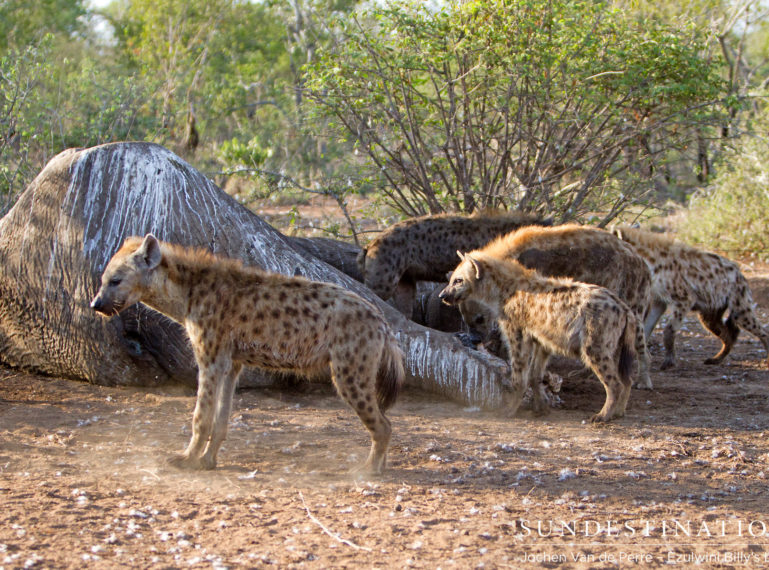
Sad news broke in the Balule last week, when the lifeless body of big tusker, Shoshangane, was discovered. This collared elephant had been monitored for over a decade by the Save the Elephants foundation, contributing invaluable data towards studies on elephant movements in the Greater Kruger. His natural death was a shock, but it was a relief to know that he was not poached for his magnificent tusks.
Now, as nature continues to take its course, Shoshangane’s body has become part of the ecosystem, feeding a variety of carnivorous critters. Ultimately, only his ivory-white bones will remain as evidence of his life with us at Ezulwini. We revisited his carcass to see what sort of animal activity would be there to receive us, and sure enough, the hyenas are having a feast.
An elephant carcass will feed a variety of carnivores for a long time. If lions find the body first, they will most likely dominate it. The size of some of the lion prides we see at Ezulwini would be large enough to fight off a couple of hyenas, but in this case, the hyenas won out. We haven’t seen lions at the carcass at all, and it is possible that the hyenas’ reliable noses led them to the carcass first, and they laid claim to the feast.
Ezulwini guests arrived to the smelly scene, intrigued by the sight of the world’s largest land mammal lying, defeated, by another of its kind. It’s a sobering sight, especially due to the endangered status of elephants in this day and age; however, this one life lost provides an essential meal for a clan of hyena cubs that rely on the strength a good meal gives them. The natural circle of life is a privilege to witness.
There is evidence of vulture activity in the white streaks covering Shoshangane’s enormous body. These incredibly powerful birds are a compulsory part of the decomposition process, ensuring that carcasses are disposed of in the cleanest and most efficient way. They hone in on a rotting carcass from kilometres away, dipping lower and lower in circular motions in the sky, as they descend on the feast. The effectiveness of the ‘vulture cleanup’ is essential in preventing the spread of diseases, as they dispose of the rotting meat, but sadly, these key environmental role-players are on the decline and are now classified as endangered.
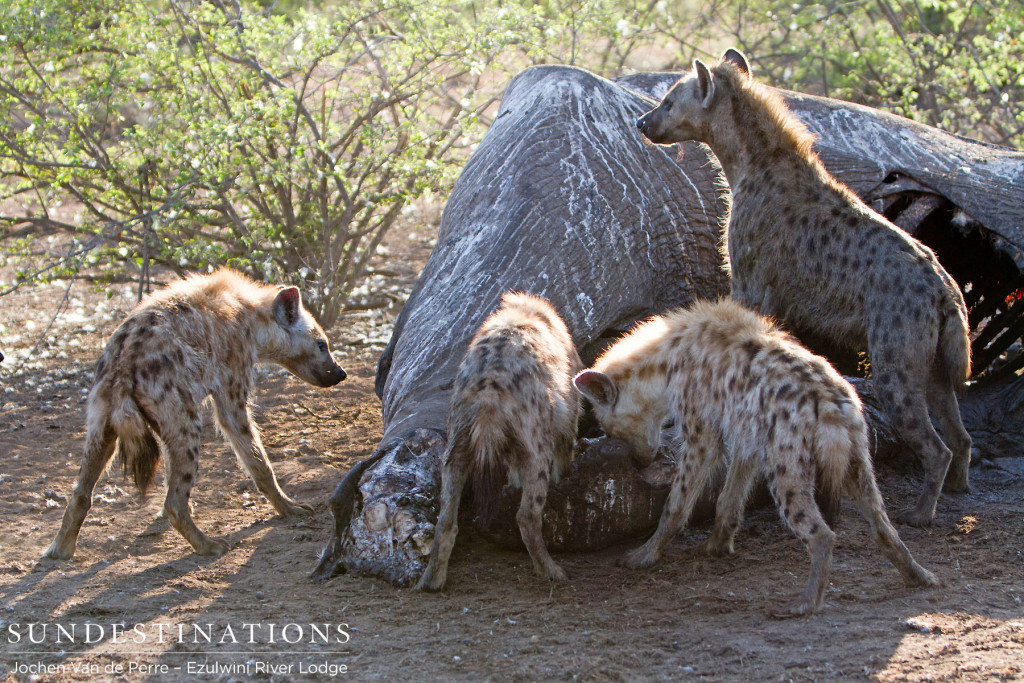
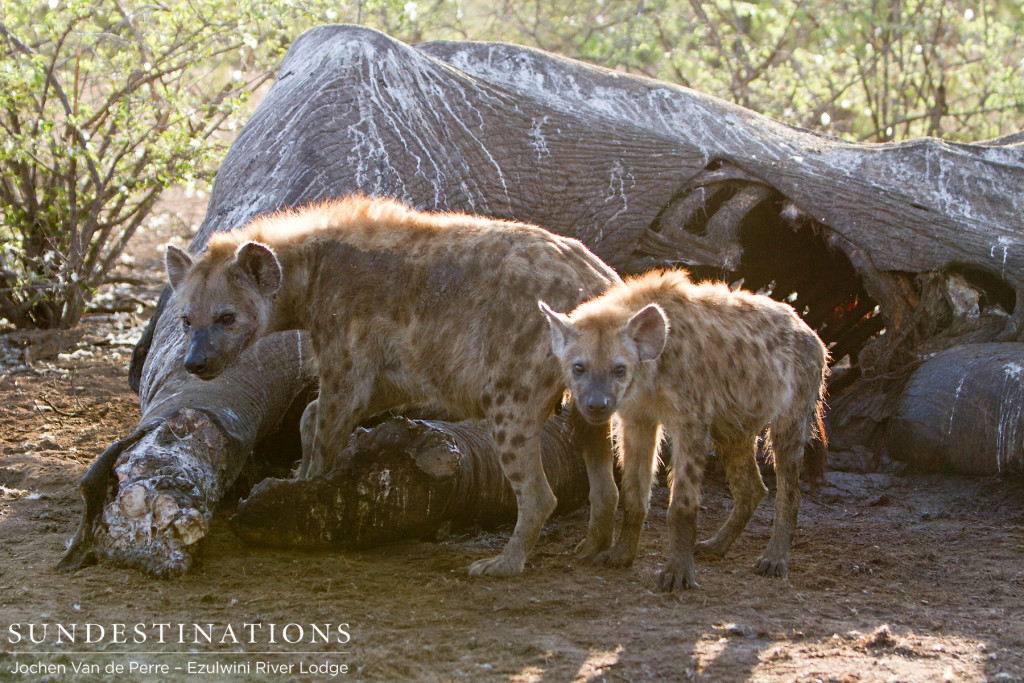
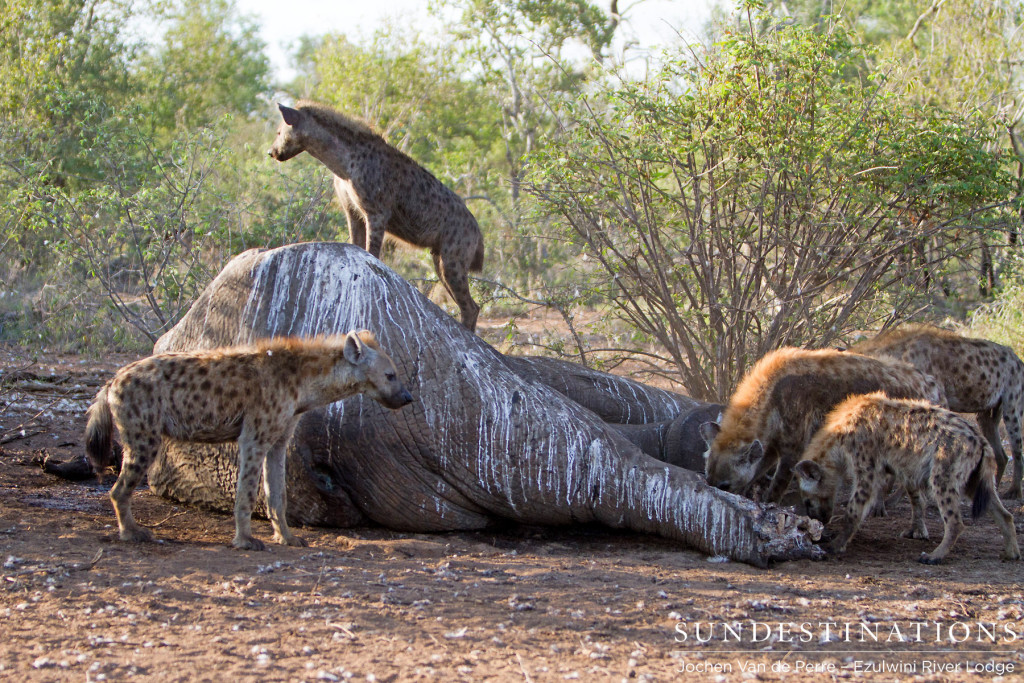
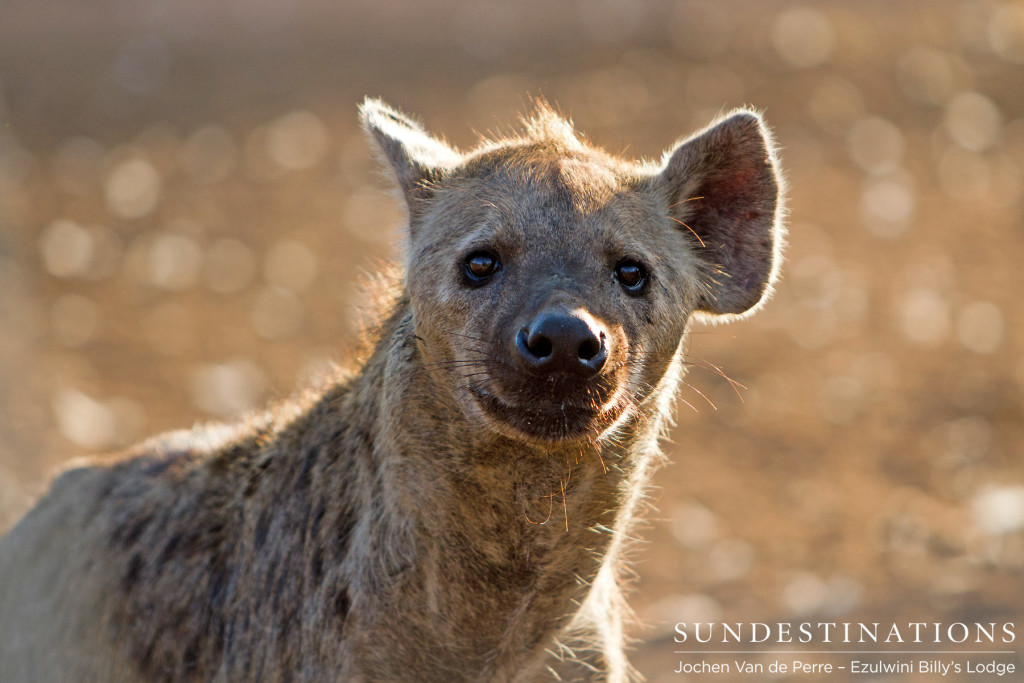
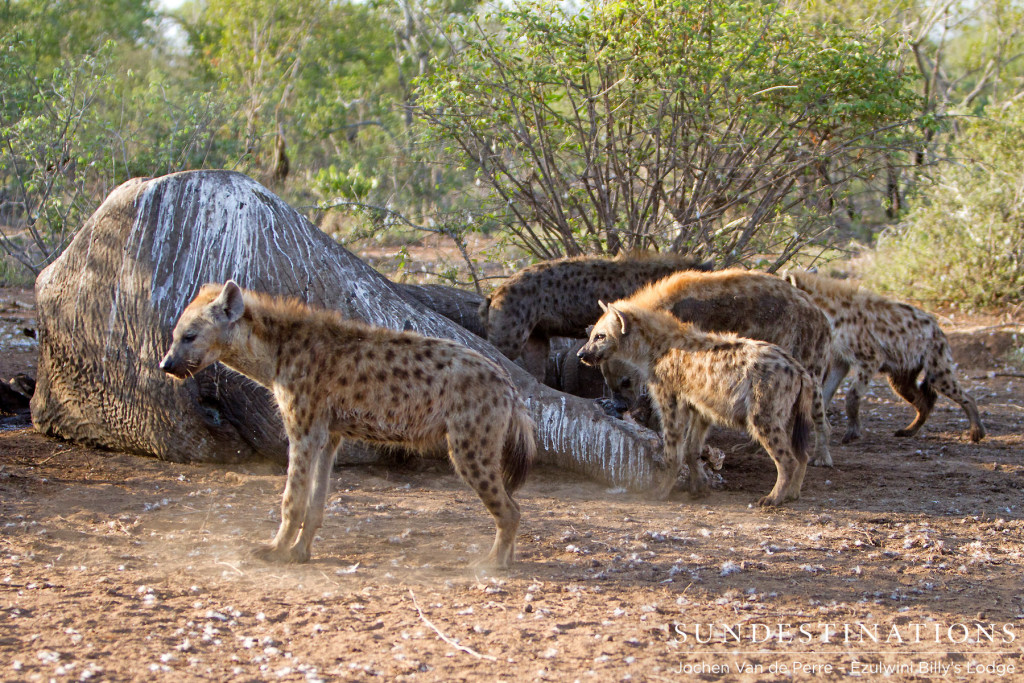
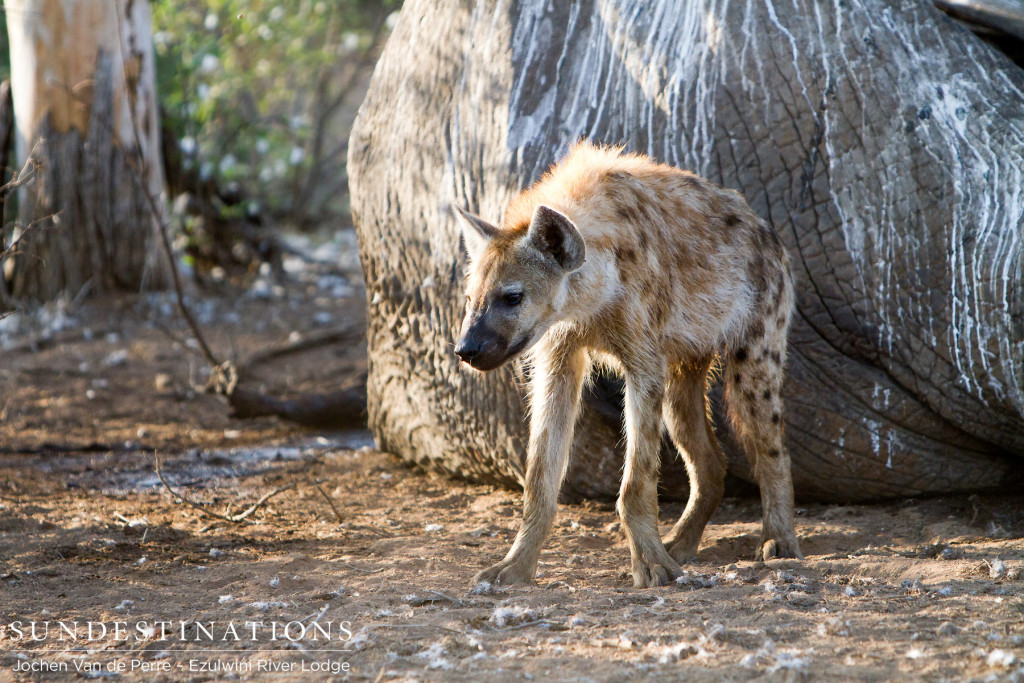
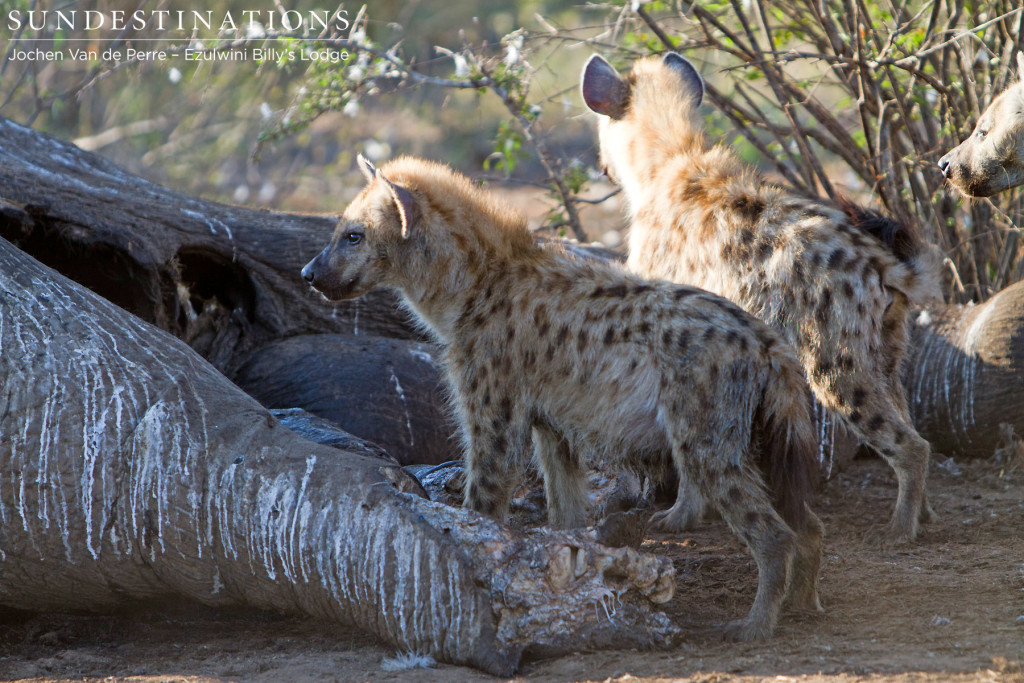
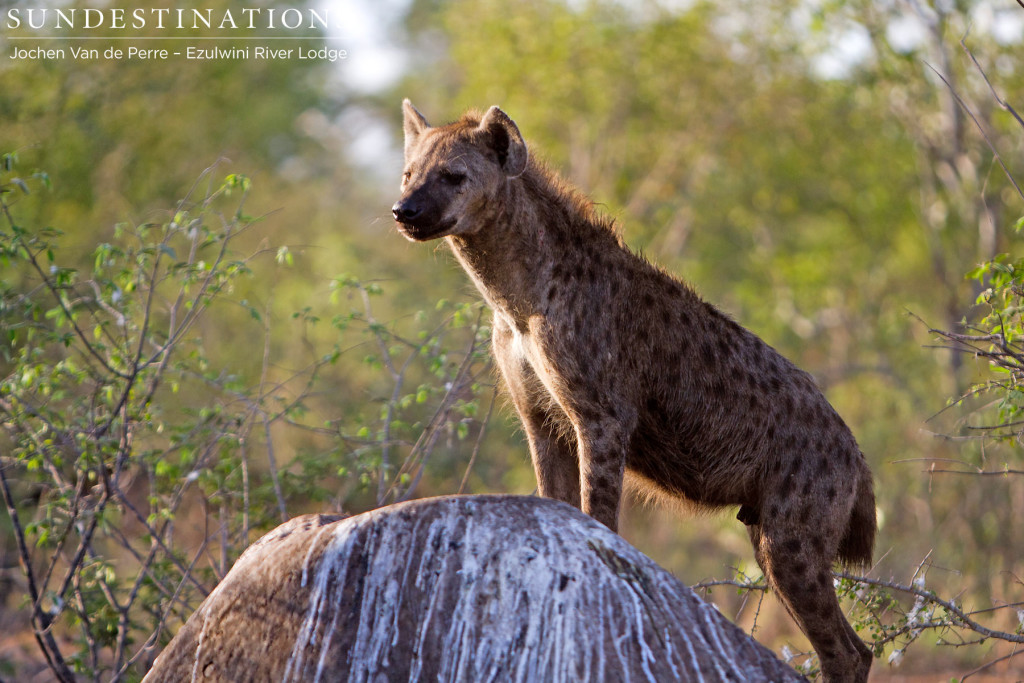
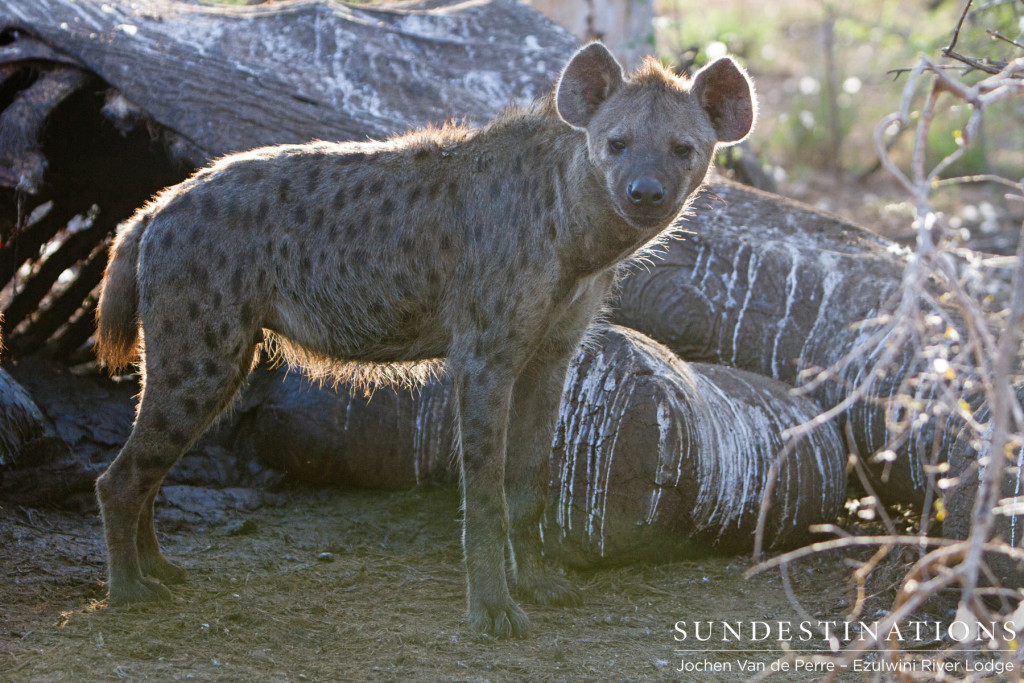
Oliver